There are different types of orchids, and one of the most popular is the Epidendrum orchid. About the plant habit and features of epidendrum orchid care, we will discuss in the article.
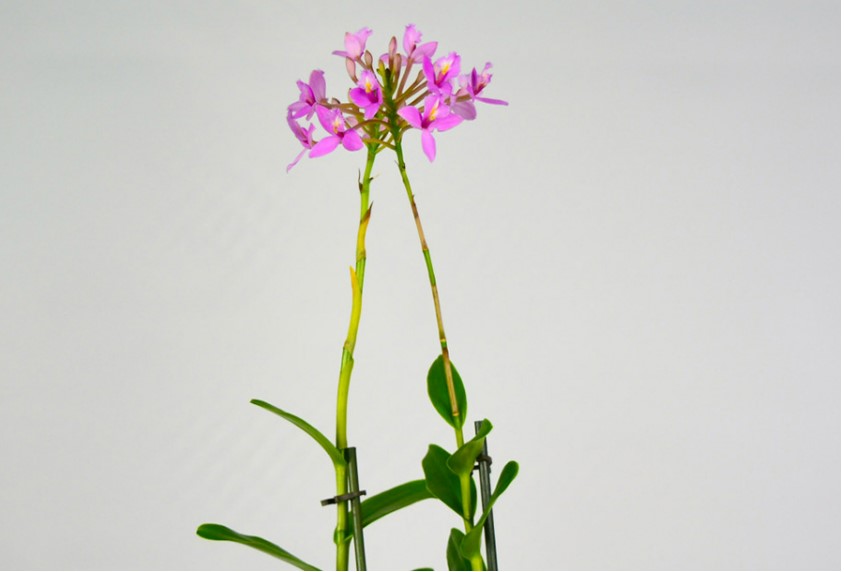
Description of the epidendrum orchid plants
Types of the Epidendrum orchid differ from each other in appearance. Despite significant differences, they all have a shortened creeping shoot, which is a small-branched rhizome, and hard, dense leaves, like real succulents. Growing up to 3-5 feet tall.
Foliage is located either at the top of tiny false bulbs in several pieces or grows in the next order on the surface of straight thin shoots.
Breeders have bred varieties that are characterized by linear-lanceolate leaves with sharp ends.
The plant boasts rich flowering. The diameter of the largest inflorescences reaches up to 14 cm. And, conversely, the smallest brushes barely reach 1 cm. The bud is formed from 3 sepals and 2 petals. These elements of the flower in some cases are similar in color and shape.
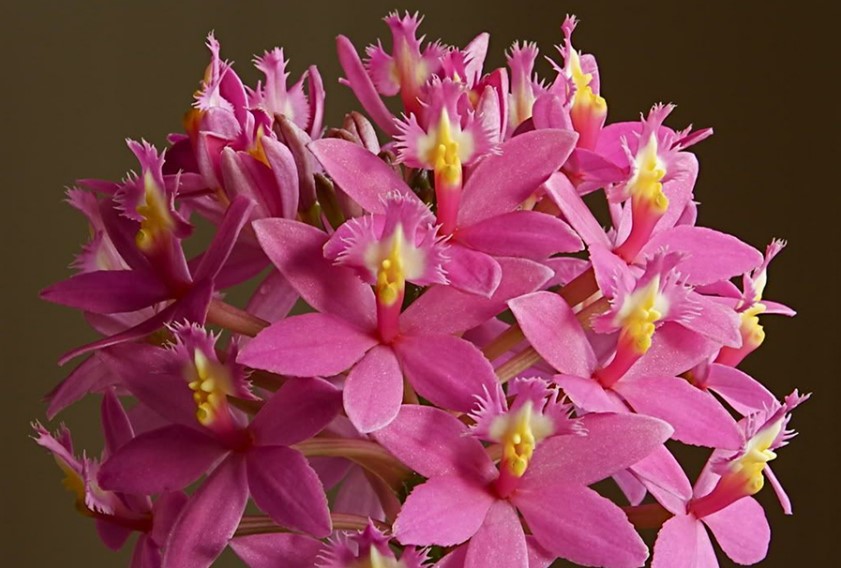
Places of growth
So what about growing epidendrum orchids. Many people are wondering, where does Epidendrum grow? In their natural environment, most epidendrum orchid varieties grow in Mexico and Colombia because they prefer a warm climate. They prefer to grow on rocks covered with moss.
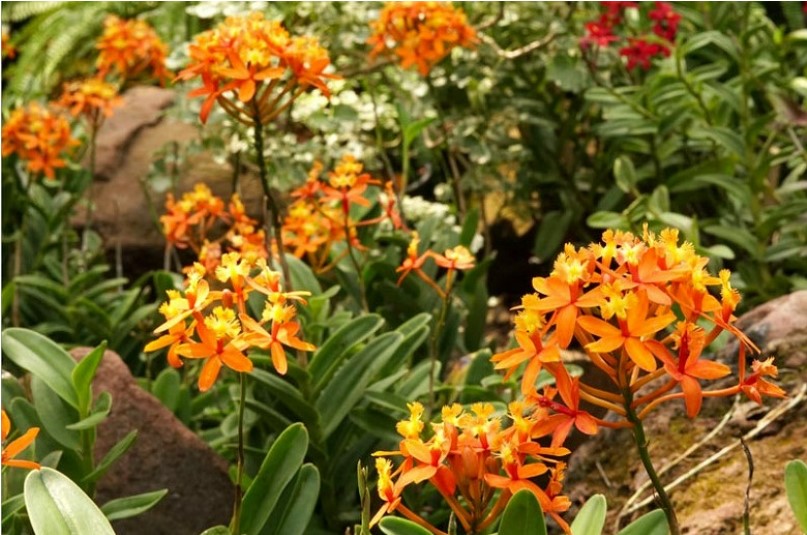
Epidendrum orchids care
Many people are wondering, how do you care for an Epidendrum orchid? Everything will be discussed in more detail below.
Location and lighting
The epidendrum genus must be kept in the right place, with the right lighting. More on this will be discussed later.
A sufficient level of lighting and not just daytime, but solar, is a fundamental factor in the normal life of the epidendrum. Daylight hours are important. At a minimum, it is 10 hours, and better – 12-14, and all year round.
In winter, too little light is compensated by backlighting with special lamps that support the process of photosynthesis, or, in extreme cases, fluorescent lamps. To avoid thermal burns, the lighting device is placed at a safe distance – at least 30 cm from the surface of the growing leaf.
Particularly in need of sunbathing is the epidendrum, which is gaining color. The higher the light level during this period, the more intense and brighter the flowering will be.
Where to put flowerpots? A suitable location for the epidendrum is the windowsills of the western or eastern exposure. When located on a south-facing window, protection from the direct sun during the midday hours is required with transparent fabric or loose blinds.
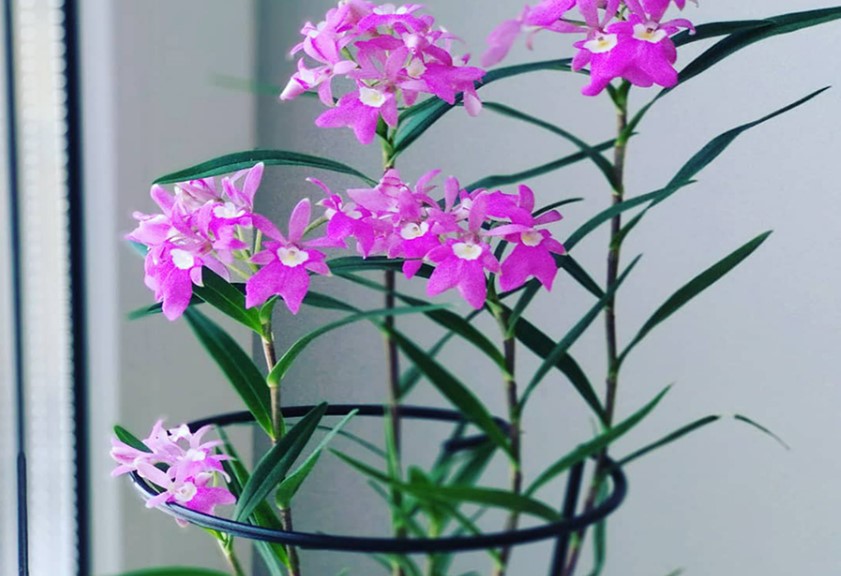
Temperature for epidendrum genus
Most types of epidendrums belong to the group moderately thermophilic. The epidendrum orchids are kept throughout the year in a constant temperature range of 60.8 °F to 77 °F with a daily average (day/night) fluctuation of around 41 °F.
In warmer months, the epidendrum can be growing outdoors – in the garden, gazebo, veranda, open balcony, or loggia. This is the easiest way to maintain warmer temperatures with the difference between night and day temperatures. But at the same time, it is necessary to ensure protection from wind, precipitation, and direct sunlight. Too much light – is also bad way to growth it . Reed stem epidendrum -is rather weak, do not forget about it.
And, of course, it is unacceptable to take a home plant outside if there is a threat of return frosts at the beginning of summer.

Watering
Irrigation water is preliminarily settled at room temperature. A flower pot or block is immersed in a basin of water. Top watering is not recommended. In this position, the container is left for 20-30 minutes. When you take it out of the water, you must wait until all the drops of water have drained. Then the pot is returned to the windowsill.
The next watering is organized after the top earthen layer dries out, and overdrying of the soil poses a threat to the roots.
Humidity level for most epidendrum orchids
The room does not have to be too humid air, it is enough that the humidity level is in the range of 50-70%. It is easy to achieve such indicators by installing pallets with expanded clay, where a small amount of water is added. Twice a day, the leaves must be sprayed with warm water.
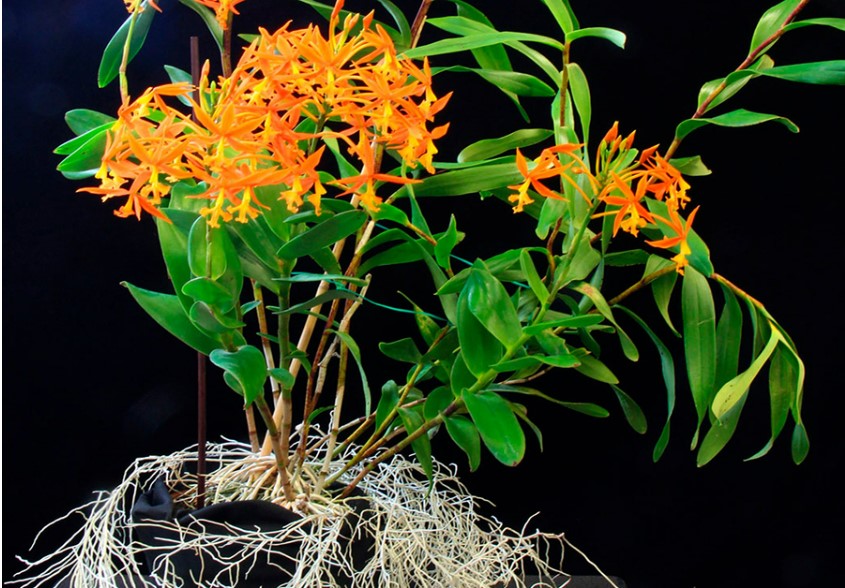
How to repot epidendrums?
There are several requirements regarding the transplantation of the Epidendrum orchid. More about it will be discussed below.
potting mix and pots
The choice of the potting mix is determined by the species. Tall and large varieties, for example, rooting epidendrum, are advised to be planted in containers, and for low varieties, on the contrary, use blocks.
Epidendrums are divided into 2 groups:
- land plants planted in a mixture of medium-sized pine bark (30%), dry leaves (40%), expanded clay (20%), and sand (10%);
- epiphytes who prefer a mixture of 80% medium grade fir bark and 20% medium fraction expanded clay.
The pot should be opaque, and wide. The bottom should be shallow. Choose options with drainage holes to avoid stagnant water.
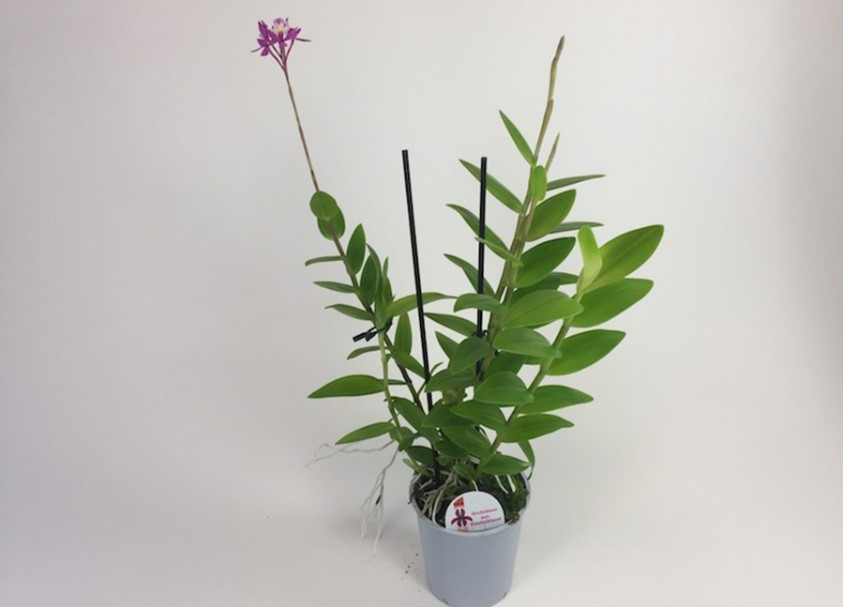
Transplant
Many are interested in, can you plant Epidendrum in the ground? The Epidendrum orchid is epiphytic. Therefore, it is not planted in open ground. Transplantation is carried out in pots. Moisten the mixture before planting. Remove dry, old, leafless pseudobulbs by separating them from the plant with a pair of sharp pruning shears.
Pick up a pot, the diameter of which is 1-2 cm larger than the previous one. Pour a few centimeters of wet substrate there. Place the orchid species in the center.
Bury the rhizome 2 cm below the rim of the pot.
Do not water for 2-3 weeks, until new roots appear. It is enough to spray the surface of the substrate with water from time to time. Tamp the substrate with a stick without damaging the roots and rhizome. The rhizome after compaction of the mixture should be on the surface. After transplanting, tie up the orchid.

Fertilization
Every second watering of the epidendrum is combined with top dressing.
Use mineral complexes for epidendrum in the dosage indicated by the manufacturer.
Fertilizers designed specifically for indoor orchids have a gentle effect, contain a full range of nutrients, strengthen the overall vitality of the plant and prolong the flowering period.
For feeding epidendrums, fertilizers and stimulants marked “For orchids” are chosen. Fertilization rules:
- during the period of active vegetation, nitrogen components are introduced;
- from the moment of forcing the peduncle to the laying of buds, the amount of nitrogen is reduced by choosing fertilizers with a predominant ratio of phosphorus and potassium;
- during the flowering season, the epidendrum is not fed to avoid premature wilting and dropping buds.
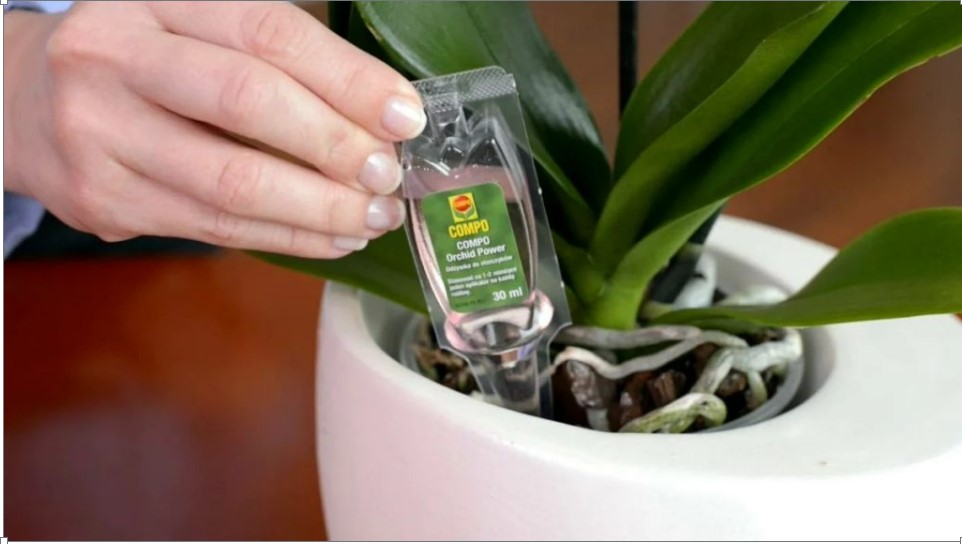
How to propagate
With home cultivation, Epidendrum is propagated by dividing the roots. Technology:
- The plant is taken out of the pot.
- Gently clean the root ball from the soil substrate.
- Cut the rhizome into fragments with a sterile instrument.
- Treat the places of cuts with coal powder.
- Plant each part in a separate container.
Producing flowers
Epidendrum orchids can produce beautiful flowers, and here are some tips to encourage blooming in this type of orchid:
- Provide proper light: Epidendrums require bright but filtered light to bloom. Place the orchid in a location where it can receive indirect sunlight for about 12-14 hours a day.
- Keep temperatures consistent: Epidendrus prefer warm daytime temperatures of 70-85°F (21-29°C) and cooler nighttime temperatures of 55-65°F (13-18°C). Avoid exposing the plant to sudden temperature changes or drafts.
- Water properly: Overwatering or underwatering can prevent the orchid from blooming. Water the plant when the potting mix feels dry to the touch, but make sure the roots do not sit in standing water. Watering frequency may vary depending on the growing conditions and the time of the year.
- Fertilize regularly: Use a balanced orchid fertilizer to feed the plant during the growing season, typically from spring to fall. Avoid using too much fertilizer as it can damage the roots and affect blooming.
- Provide humidity: Epidendrum orchids prefer a humid environment with 50-70% humidity. You can increase humidity by placing a humidifier nearby or placing the pot on a tray filled with pebbles and water.
- Repot when necessary: If the orchid has outgrown its pot, repot it in fresh potting mix. A well-draining mix with bark, sphagnum moss, or perlite works well for Epidendrums.
With proper care and attention, your Epidendrum orchid should produce beautiful blooms that will last for several weeks.
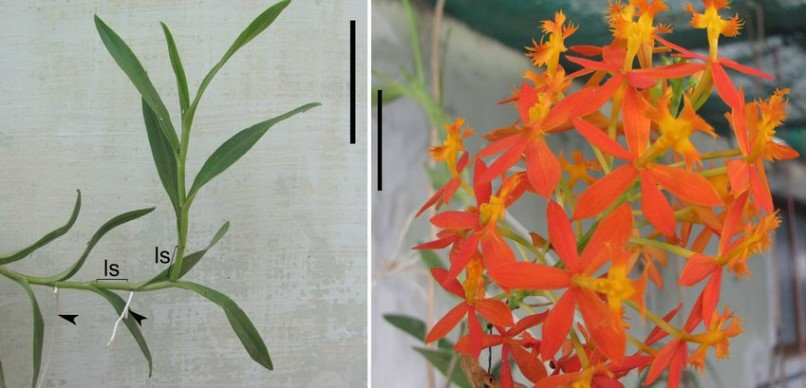
Diseases and pests
If the care of the orchid species is correct, there are no pests on the bushes. However, in the case of the detection of parasites and diseases, it is necessary to act correctly. More on this will be discussed later.
Diseases
Epidendrum orchids are susceptible to various diseases, some of which are:
- Bacterial brown spot: This disease is caused by the bacteria Pseudomonas cichorii and appears as small, dark brown spots on the leaves. Infected leaves may fall off the plant, and the disease can spread rapidly, especially in wet conditions.
- Fusarium wilt: This fungal disease causes the leaves to wilt and turn yellow, and the roots to rot. The disease can spread quickly and eventually kill the plant.
- Black rot: This bacterial disease causes black, sunken lesions on the leaves, stems, and flowers. The infected tissues may become slimy and emit a foul odor.
- Anthracnose: This fungal disease causes brown, water-soaked spots on the leaves, flowers, and stems. Infected tissues may become soft and eventually fall off.
- Botrytis blight: This fungal disease causes grayish-brown mold to grow on the leaves, flowers, and stems. The disease spreads rapidly in humid conditions and can cause significant damage to the plant.
- Root rot: This fungal disease can occur when the plant is overwatered, causing the roots to become waterlogged and rot. The symptoms include yellowing leaves, stunted growth, and a foul odor from the roots.
To prevent these diseases, it is essential to maintain proper growing conditions for your Epidendrum. This includes providing adequate air circulation, avoiding overwatering, and ensuring that the plant is not exposed to extreme temperatures. Additionally, it is important to practice good hygiene by regularly cleaning and sterilizing the tools and equipment used for handling the plants. If you suspect that your orchid has a disease, it is best to isolate it from other plants and consult with a professional or specialist for treatment options.
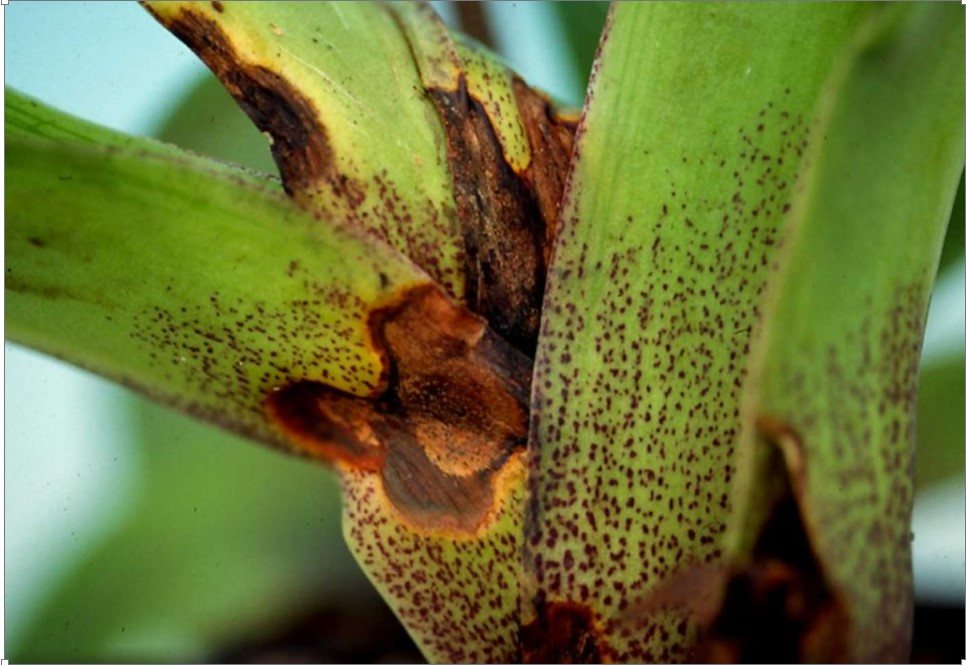
Pests
Several common pests should be noted. We will talk about them further.
- Spider mites. Spider mites feed on the sap on the underside of leaves, causing white spots and loss of sheen. Requires pesticide treatment. You can prevent pests if you improve the circulation in the room, and increase the amount of light.
- Worms. Scale insects are very common on the orchid. Often they appear if there is not enough air. Parasites suck the sap from the leaves and reed stem epidendrum, stunt the growth, and cause yellow spots. After determining the parasites, remove the infected leaves, and treat them with pesticides.
- Thrips. Throughout the year, thrips can be on the bushes. They suck the sap from reed stem epidendrum, leaves, young tips, and flower spikes. The leaves dry up, and the flowers fall off. Requires pesticide treatment.
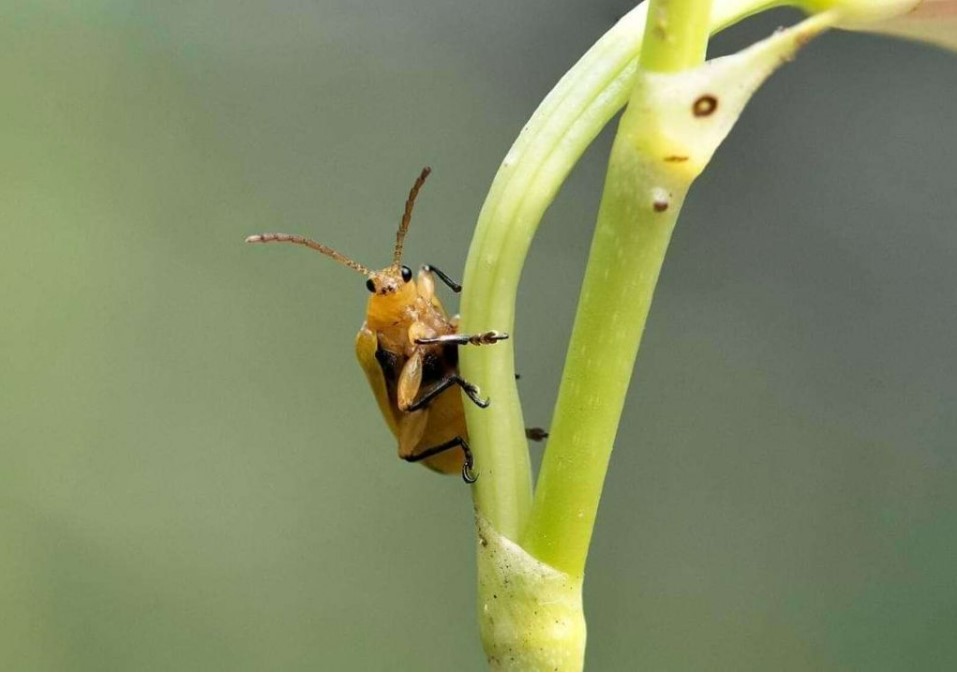
Conclusion
As you can see, caring for epidendrums is quite simple. It is only important to follow all the rules so that the plants delight in flowering.
Epidendrum orchids are a popular group of orchids that are relatively easy to care for and can produce stunning blooms. Here are some general guidelines for growing and caring for Epidendrum orchids:
- Light: Epidendrum orchids prefer bright, indirect light. Avoid direct sunlight, as it can scorch the leaves. A south-facing window is usually ideal.
- Temperature: Epidendrum orchids prefer moderate temperatures, between 60-80°F (15-27°C). They can tolerate temperatures outside this range, but extremes should be avoided.
- Watering: Epidendrum orchids prefer to be kept relatively moist but not soaking wet. Water thoroughly when the potting mix is almost dry to the touch, but be careful not to let the plant sit in standing water. Water less frequently in the winter when the plant is not actively growing.
- Humidity: Epidendrum orchids prefer high humidity, ideally between 50-70%. You can increase humidity by placing the pot on a tray of wet pebbles or using a humidifier.
- Fertilizer: Feed your Epidendrum orchid with a balanced fertilizer every two weeks during the growing season (spring and summer). Reduce the frequency in the winter.
- Repotting: Epidendrum orchids should be repotted every 2-3 years or when the potting mix has broken down. Use a well-draining potting mix specifically designed for orchids.
- Pruning: Remove any dead or yellowing leaves or stems as they appear.
By following these guidelines, you can enjoy the beauty of Epidendrum orchids for years to come.
Read also:
- How to grow orchids in water
- White spots on orchid leaves
- Are orchids parasites
- Humidity tray for orchids
- Оrchids wilting leaves
